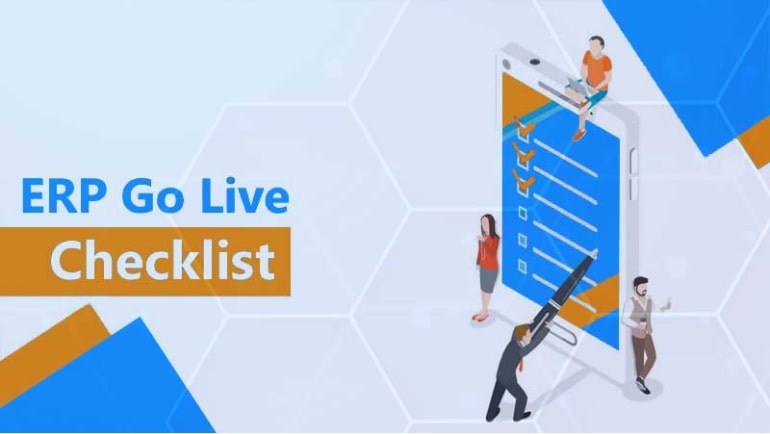Microsoft Go live Checklist ERP Implementation
Microsoft Dynamics ERP go-live checklist can assist implementation project teams in confirming that all relevant steps have been completed. Discover what items project leaders should include on their list.
An ERP implementation is a complex process, and project leaders should consider creating a checklist to ensure that nothing is overlooked or forgotten as the pressure mounts prior to the go-live date. Among the issues that project leaders should include on the checklist are ensuring that a training strategy is in place and the key resources are available after go-live. At the final go-or-no-go meeting, leaders can also use the checklist to make a more informed decision on the readiness of the new Dynamics ERP system. Here are a few items that project leaders should consider including in an ERP implementation checklist.
Some examples of items that project leaders should put on the checklist include confirming that a Business Central training plan is in place and that key resources are available after go-live. Leaders can also use the checklist at the final go-or-no-go meeting to make a more informed decision about whether the new Dynamics ERP system is ready.
1. Confirm the project leader has shared the rollout strategy
The project leader must inform the project team members, employees, and any third parties who will use the new Erp system Microsoft Dynamics of the actions that will occur prior to and after the post go-live. Sharing the strategy will help everyone plan their work, regardless of whether they are responsible for last-minute fixes and training or will simply be utilizing the new system.
2. Check that the team has migrated all mandatory data
Before going live, the project leader must validate that the team has executed the data migration and has migrated all the necessary data. Depending on the migration strategy, the team may be required to perform additional migrations of historical data after they go-live. However, the project team must determine the migration plan well in advance of the go-live date, and the project leader must include migration-specific information in the checklist.
3. Confirm all bugs have been fixed
Before going live, the project team must resolve all bugs found during the final phase of implementation. The team will likely not have fixed all bugs before go-live, but the team should review each one for severity and devise a plan to address each one. For instance, the team may fix critical bugs before they go-live but wait until the next implementation phase to address minor ones.
4. Put a training plan in place
Before launching the ERP system, the project team may provide training. However, the checklist should include a reminder to the team to confirm that they have prepared the planned training, assigned trainers to lead the required training sessions, and alert employees who will be required to attend training.
5. Verify that project communications are ready
Typically, a project team send out formal communications regarding the Microsoft Dynamics ERP implementation shortly before and after they go-live. This communication must be complete prior to the launch. Communication of the project may include a note on the company intranet, an email to workers, and phone calls to external vendors and other third parties who use the new ERP system.
6. Confirm the team has configured the production environment
Occasionally, the project team carries out an ERP implementation in a sandbox environment then replicates it in a production environment for after go-live. In this situation, the project leader must validate that the team has performed all necessary steps, including the configuration of the database and the connection of all required interfaces. Before going live, the project leader may also want to examine the production system for any test data.
7. Check the availability of resources
The project leader should confirm that essential Dynamics 365 Consultant, such as implementation consultants, the ERP software vendor, and any Microsoft Dynamics Partner, will be available to support the new ERP system after its post go-live. As employees begin utilizing the new system, they will undoubtedly have questions and encounter problems; therefore, these resources must be instantly available to handle any possible issues.
8. Complete a list of basic sanity tests
The project leader may request that the team do a series of simple sanity checks to ensure the ERP system is operating as planned. Tests can include running a few queries, producing a test entry to verify that picklists are functioning and that users can save data, and requiring a few employees to log in to ensure they can access the system. Obviously, the team should have already conducted more extensive testing. These tests are only to confirm that the fundamentals are functioning properly.
9. Review project schedule
If the project team is using a project management application for the implementation, the project leader can add a reminder to the checklist for the team to review the application’s list of outstanding tasks and ensure that they have been completed, or already exist as exceptions.
10. Restrict access to legacy ERP system
After a certain point, the project team should ensure that employees cannot enter new data to the old ERP system. Before the final data migration or shortly before going live, the team may perform this task. This task often entails modifying the role that employees use to access the old ERP system, as certain employees may continue to have read-only access for a period of time after the system goes live.
To know more about seamless Microsoft Dynamics ERP implementation and Go Live, please get in touch for a free consultation.




